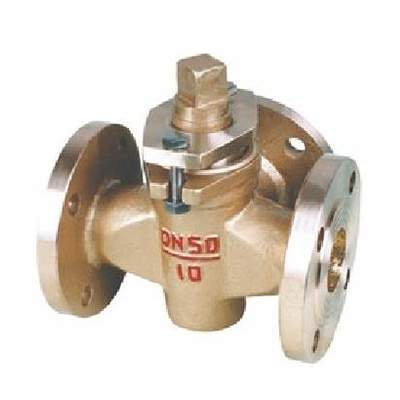Welcome to My Blog!
Before we dive into the content, if you’re interested in our products or have any questions, please feel free to visit our Contact Us page on the website. Our team is ready to assist you with inquiries, orders, or any support you may need.
Now, let’s get started on our journey together. I hope you find the content here insightful, engaging, and valuable.
Plug valves are critical components in industrial piping systems, ensuring reliable flow control across a wide range of applications. Understanding plug valve dimensions is essential for engineers, designers, and maintenance professionals who want to select the right valve for their systems. This guide will cover everything from standard dimensions and measurement techniques to types of plug valves and their applications, helping you make informed decisions.
What Are Plug Valve Dimensions?

Definition of Plug Valve Dimension
Plug valve dimensions refer to the physical measurements of the valve body, ports, and flanges. These dimensions determine how the valve fits into a piping system, how it interfaces with other components, and its suitability for specific pressure and flow requirements. Key dimensions include face-to-face length, end-to-end length, flange size, port diameter, and overall height.
Why Plug Valve Dimensions Are Important in Industry
Accurate plug valve dimensions are vital because even small discrepancies can cause leaks, reduce efficiency, or create safety hazards. Industrial pipelines often operate under high pressure or extreme temperatures, and a mismatched valve dimension can result in operational failure. Correct dimensions ensure seamless integration, long service life, and optimal performance.
Difference Between Valve Size and Dimension
It’s important to note that valve size (e.g., 2-inch, 4-inch) does not always equate to the valve’s actual dimension. Size usually refers to the nominal pipe size (NPS) it connects to, whereas dimensions include precise physical measurements, such as face-to-face length and port diameter. Understanding this distinction prevents incorrect selections during design or replacement.
Standard Plug Valve Dimensions and Charts
ANSI, DIN, and API Plug Valve Standards
Plug valves follow several widely recognized standards to ensure compatibility and safety. The most common are ANSI, DIN, and API standards.
- ANSI B16.10: Covers metal plug valves ranging from NPS 1/2 to NPS 24. It defines face-to-face and end-to-end dimensions, allowing valves to fit seamlessly into standard piping systems.
- DIN EN 558-1: Applicable to multiple series of plug valves (Series 1 to Series 14), this standard ensures interchangeability with other valve types such as gate and ball valves.
- API 599: Defines dimensions, materials, testing, and performance for industrial metal plug valves, covering sizes from NPS 1/2 to NPS 24. It is widely used in oil, gas, and chemical industries.
Common Plug Valve Sizes and Flange Dimensions
A typical plug valve’s face-to-face dimension can range from 152 mm to 610 mm depending on the size and pressure class. Flange dimensions follow the same standards as other piping components, ensuring compatibility and easy installation.
How to Read a Plug Valve Dimension Drawing
Plug valve drawings display the key dimensions including body length, height, port diameter, and flange connections. Engineers can use these drawings to verify that the valve will integrate correctly into a system and meet the required flow specifications.
Plug Valve Dimension PDF and Resources
Many manufacturers provide downloadable PDF charts and CAD files for plug valve dimensions. These resources are essential for engineers during the design and specification phase, allowing precise planning and reduced risk of errors.
Types of Plug Valves and Their Dimensions
Lubricated vs. Non-Lubricated Plug Valves
- Lubricated plug valves: Include a cavity filled with lubricant to reduce friction, allowing smooth rotation of the plug. These valves often have slightly larger dimensions due to the lubrication chamber.
- Non-lubricated plug valves: Rely on metal-to-metal or resilient seats and typically have compact dimensions suitable for low-maintenance applications.
High-Pressure Plug Valve Dimensions
High-pressure valves require reinforced bodies, thicker walls, and precise port sizes. These valves are often used in oil, gas, and chemical industries, where safety and reliability are paramount.
Stainless Steel Plug Valve Dimensions
Stainless steel plug valves are widely used in corrosive environments. Their dimensions usually comply with ANSI or API standards, but material considerations may slightly influence wall thickness and flange sizes.
Industrial Applications and Dimension Requirements
Industries such as petrochemical, water treatment, and power generation require plug valves with precise dimensions to handle specific pressures, temperatures, and flow rates. Incorrect dimensions can lead to operational inefficiency or safety hazards.
How to Measure Plug Valve Dimensions Accurately
Tools Needed for Measurement
- Vernier calipers or micrometers for small dimensions
- Tape measures or laser measuring tools for larger valves
- Flange gauges for verifying standard connections
Step-by-Step Measurement Guide
- Measure face-to-face length between valve ends.
- Measure flange diameter and bolt circle dimensions.
- Verify port diameter and overall valve height.
- Compare measurements with standard dimension charts to ensure compatibility.
Common Measurement Mistakes to Avoid
- Ignoring tolerance ranges specified in ANSI, DIN, or API standards.
- Measuring only the nominal size rather than exact physical dimensions.
- Failing to consider pressure class requirements which may affect valve thickness.
Choosing the Right Plug Valve Dimension for Your System
Factors to Consider: Pressure, Flow Rate, Material
Selecting the correct valve dimension involves evaluating the system’s pressure, flow rate, and medium. Material choice (steel, stainless steel, or alloy) can influence wall thickness and overall size.
Custom Plug Valve Dimensions
For specialized applications, manufacturers offer custom plug valves. These may include unique port sizes, reinforced bodies, or specific flange designs to meet system requirements.
Comparing Dimensions from Different Suppliers
When sourcing plug valves, always check dimension charts and datasheets to ensure consistency across suppliers. Differences in dimension can affect installation, flow, and performance.
Plug Valve Dimension Price Guide
Prices generally increase with size, material quality, and compliance with high-pressure standards. Custom dimensions or specialized materials can also affect cost.
Brand and Model-Specific Plug Valve Dimensions

Popular Brands and Their Dimension Charts
Major plug valve brands provide comprehensive dimension charts, often available online or in PDF format. Examples include FluoroSeal and JSC Valve, which provide ANSI, DIN, and API-compliant valves.
Downloading Datasheets and Technical Specifications
Datasheets contain key dimensions, pressure ratings, and material specifications. Downloading these resources ensures proper system integration.
Compatibility with Standard Dimension Charts
Even when using branded valves, confirming compatibility with ANSI, DIN, or API standards prevents installation issues and maintains operational efficiency.
Conclusion
Understanding plug valve dimensions is crucial for selecting, installing, and maintaining reliable valves in industrial piping systems. By following industry standards, accurately measuring valves, and consulting manufacturer datasheets, engineers can ensure operational efficiency, safety, and system longevity. Proper dimension selection minimizes installation errors, reduces maintenance costs, and improves overall system performance.
FAQ
What are standard plug valve dimensions?
Standard plug valve dimensions follow ANSI, DIN, or API specifications, defining face-to-face length, flange size, and port diameter to ensure proper installation and system compatibility.
How do I measure plug valve dimensions accurately?
Use calipers or tape measures to check face-to-face length, port diameter, and flange connections, and compare with standard dimension charts for verification.
Can plug valve dimensions vary between manufacturers?
Yes, slight differences may exist, but most reputable manufacturers adhere to ANSI, DIN, or API standards to ensure interchangeability.
Are plug valves available in custom dimensions?
Many manufacturers offer custom plug valves to meet specific industrial requirements, including unique port sizes, flange types, or body lengths.
Why are plug valve dimensions important in industrial systems?
Correct dimensions ensure proper fit, prevent leaks, maintain flow efficiency, and meet pressure and safety requirements in pipelines.
Ready to find the perfect plug valve for your system? Explore our detailed dimension charts and request a free consultation today!
